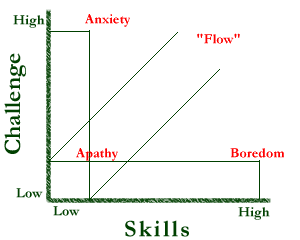“Between stimulus and response, there is a space.
In that space lies our freedom and power to choose our response.
In our response lies our growth and freedom.”~ Victor Frankl: Man’s Search for Meaning
What pushes your buttons? What is it about that annoying family member, friend or work colleague that has the ability to “get on your goat”?
It is common for people who come to see me to be feeling stressed and having symptoms of this stress, such as neck and shoulder pain, headaches, anxiety and digestive upsets. When we look at the source of this stress they speak about the negative effects they feel when someone around them does or says something in particular, i.e. they “push their buttons”.
We all have lots of things that “push our buttons” apart from individual people; perhaps it’s someone driving a car too closely behind us or cutting us off. There are a wide range of triggers which build up through a person’s life including physical and emotional trauma, foods and chemicals, and mental stressors.
Our stress response is simply a form of protection (defence) that occurs when we respond to a situation that we perceive as threatening. Our brain and body accesses our vast memory store and becomes hyper-vigilant to these threats. As a result, a minor experience (such as that annoying person saying the thing that bugs you) can cause a significant reaction within you that is disproportionate to the initial triggering event.
Our response to stress is a clever and primitive reaction to a threat and is critical for our survival. In a stress-responsive state we need lots of energy in the limbs to either flee or fight. This causes energy to be diverted from other high energy requirements such as our immune system, digestion and higher cognitive functions. As a short term response the stress response is essential; but in the long term it leads to the chronic illnesses, pain, anxiety and depression experienced by many of us.
We give our brain far too much credit for being ‘smart’. Its real focus is protection. Good health, as the result of reduced stress, requires the brain to have an accurate perception of what’s going on both within the body and beyond. An accurate perception of threat is critical but it is distorted by the mind’s understanding of the threat which is inevitably based on its past experiences.
So how do we increase the “space” and find the “freedom and power” mentioned in the Victor Frankl quote above?
First, consider that 10% of your life is made up things that are beyond your control, while 90% of your life is decided by how you react. What does this mean?
We really don’t have control over a lot of what happens to us. A driver cuts us off in traffic, someone arrives late, or someone says something offensive. But that is only 10% our experiences. The other 90% is different: you determine this 90% of your life by your reactions. You cannot control a red light, but you can control your reaction to it.
Being free to choose your reaction to potentially stressful situations requires you to focus on enlarging the “space” between what happens (the stimulus) and your reaction (the response).
As we mature, the apparent size of our “space” is constrained by many things: our genetic makeup, our society’s and family’s norms, our experiences and our present circumstances. But in addition, we are born with a great gift – the freedom to choose. Exercising this freedom, and its associated power, is the key to creating more “space”.
So the key to a happier, healthier and more creative life is to work towards developing “space”. The key to increasing our “space” is noticing – noticing how we have reacted to situations as we go through our daily lives but not judging ourselves for having reacted in a certain way. Noticing is when we suddenly realise we are observing our reaction, not just being stuck in it and it going around and around in our mind.
The noticing might be only a split second. In that time if we notice our noticing, we will observe that it is accompanied by a calm presence and eventually (after as many cycles of noticing that are necessary) …..a resolution.
“The range of what we think and do is limited by what we fail to notice.
And because we fail to notice that we fail to notice, there is little we can do to change;
until we notice how failing to notice shapes our thoughts and deeds.”~ R. D. Laing
We might start by noticing our reaction up to 48 hours (or longer) after an event, in that time we have continued to be reactive; with the event going around and around in our mind. When we do notice our reaction to a particular event and still feel an emotional charge attached to it (which often involves blaming someone or something), then we can decide to let it go. Sometimes you will notice your reaction again much later than the event that triggered it. The trick is to keep noticing (but not judging) your reaction to this event, as it recurs in your memory.
What is the advantage of not judging your reaction? Judging is a job of the mind. But your mind tends to use past experiences as a measuring stick to judge current ones. The mind needs help to find a way towards resolution.
“We cannot solve our problems with the same thinking we used when we created them.” ~ Albert Einstein
People who come to see me for Network Care often comment that, as a result of their visits, they notice that people and situations that previously “pressed their buttons” gradually become less significant for them. They can come to see the person or situation from a different perspective as more “space” to make choices has been freed up in themselves.
This can be because their “buttons” are no longer connected to old patterns of stress (sometimes referred to as “wounds”) so they become less reactive; they have more choice. There is growth and freedom.
Interestingly, a person’s opening up of space can have the positive effect of opening up space in their protagonists.


